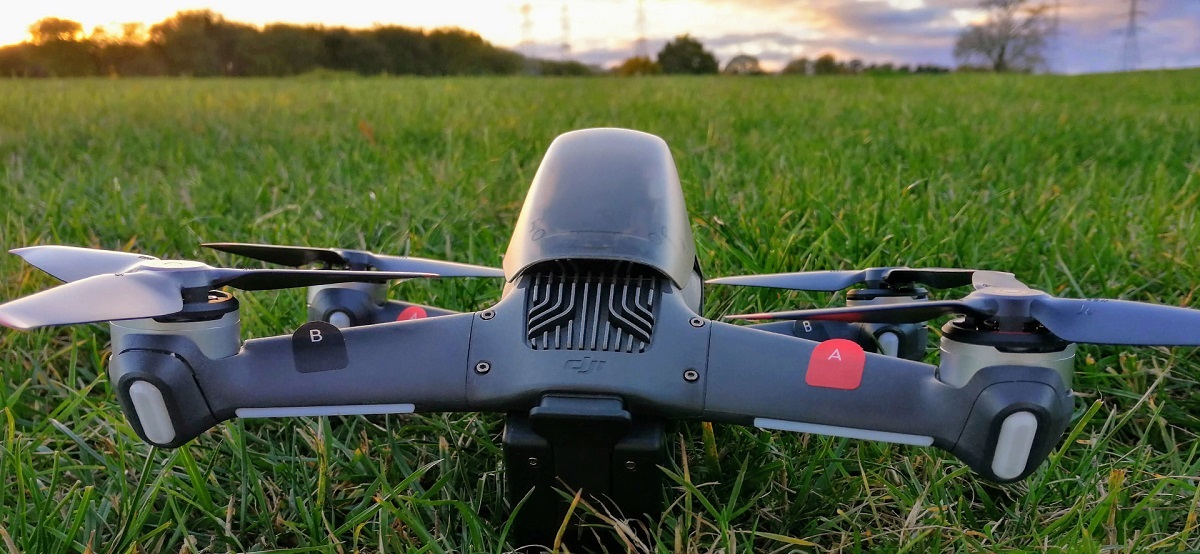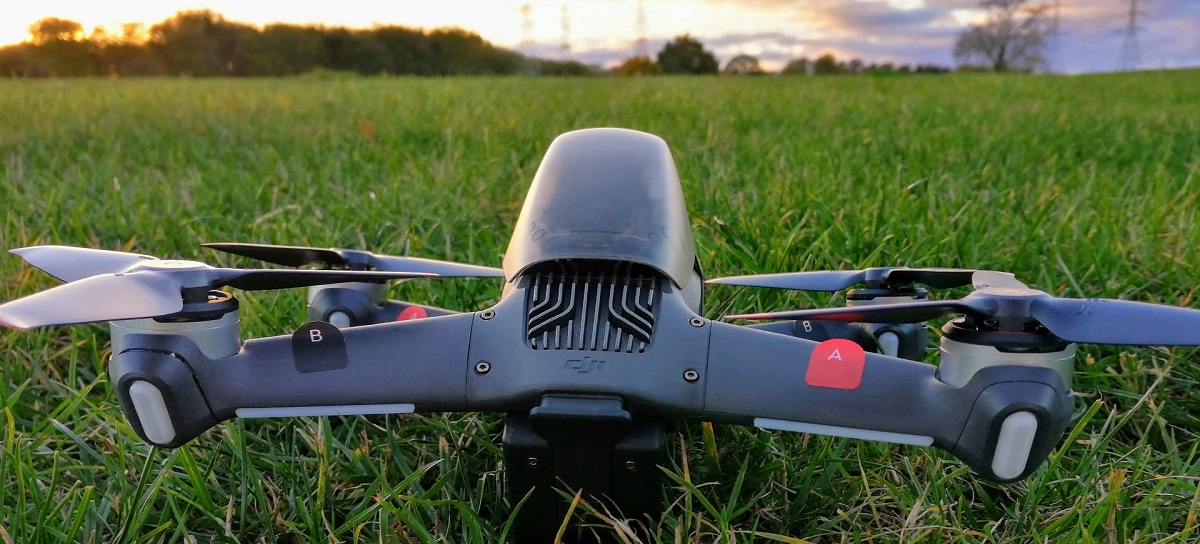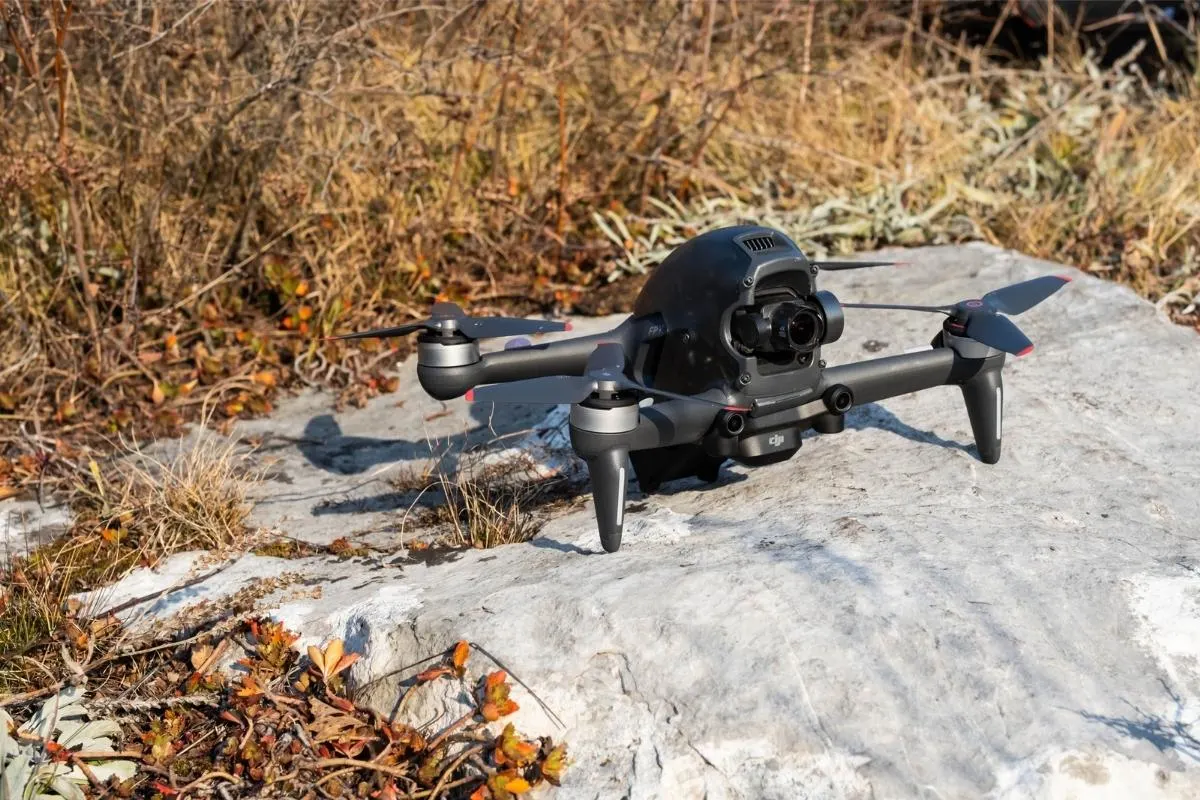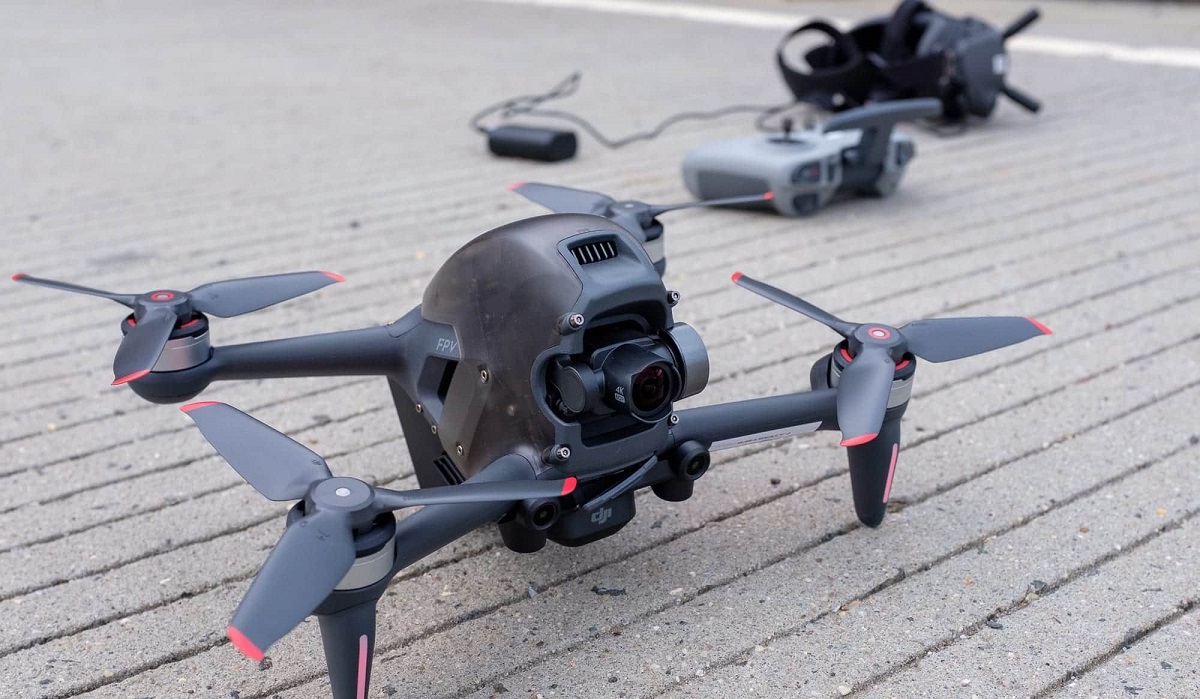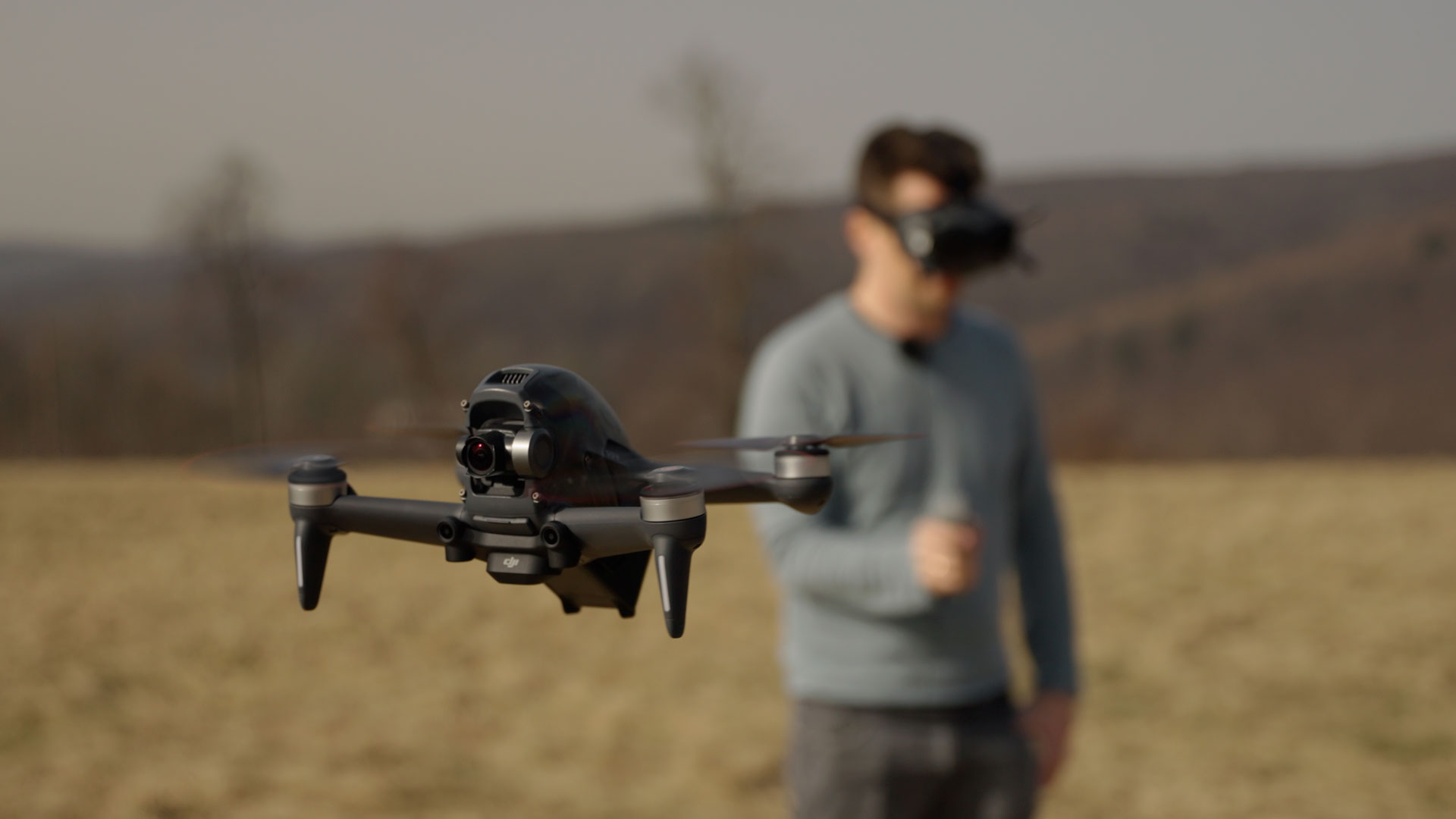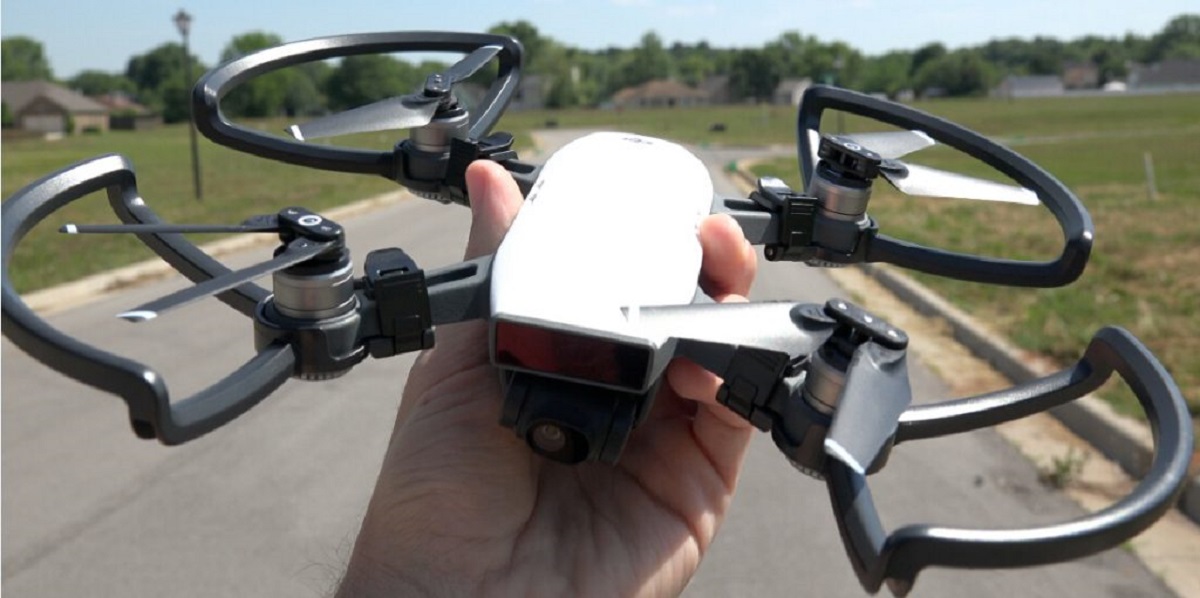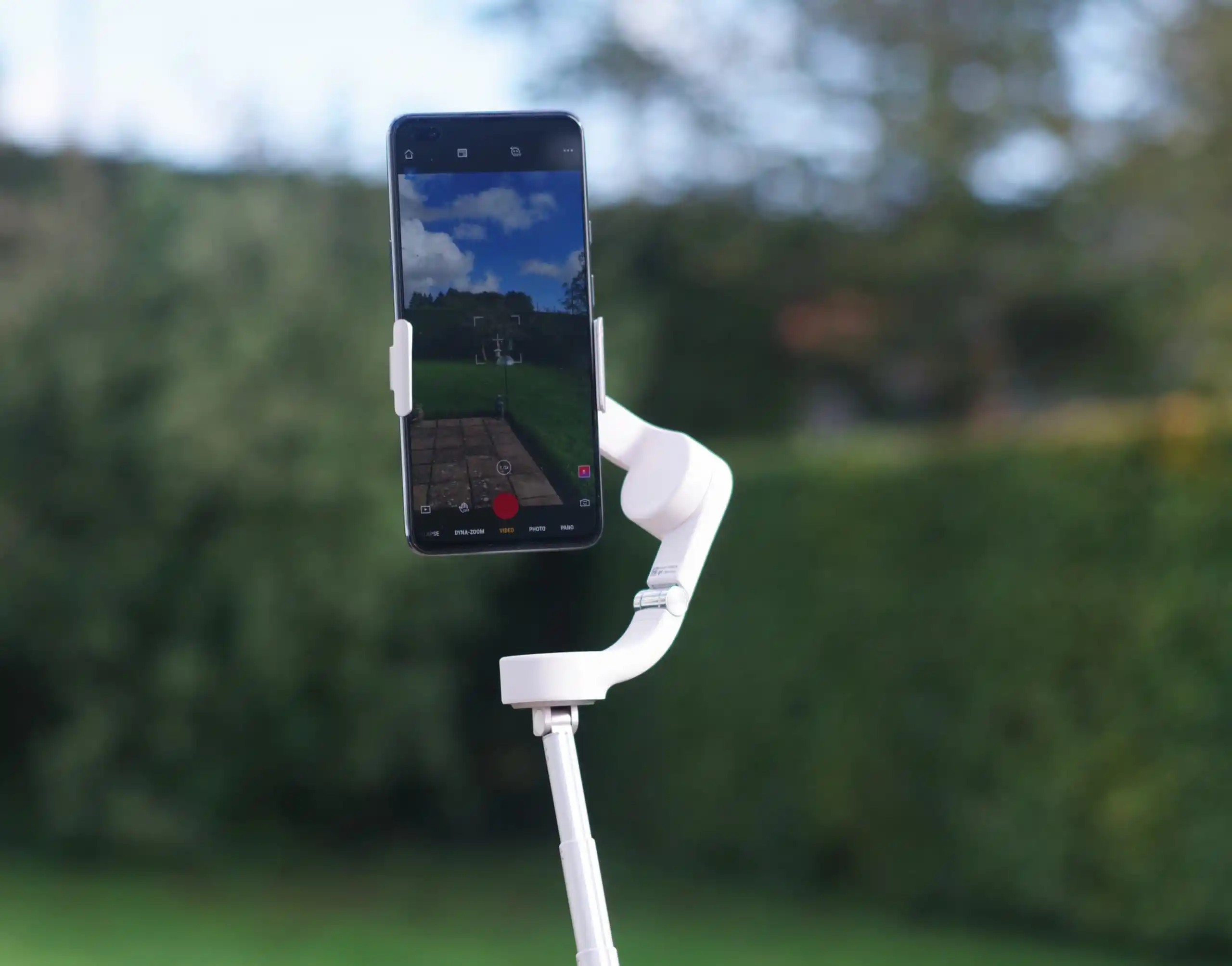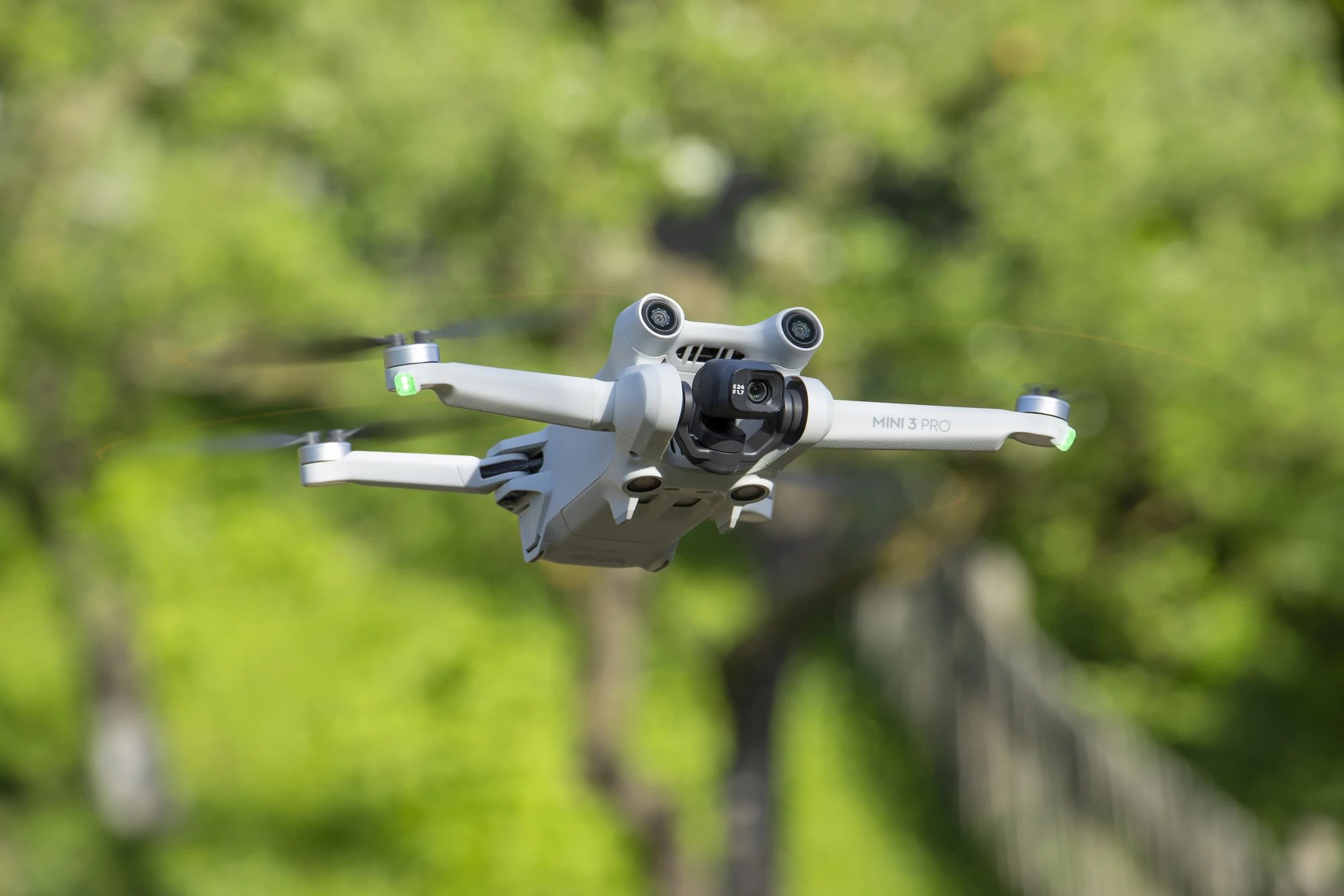Introduction
Welcome to the exciting world of the DJI FPV Drone! If you’re a drone enthusiast or a thrill-seeker looking for an adrenaline-pumping aerial experience, you’ve come to the right place. In this article, we will explore the speed capabilities of the DJI FPV Drone and delve into what makes it one of the fastest and most exhilarating drones on the market.
The DJI FPV Drone represents a significant leap forward in FPV (First Person View) technology, offering users a unique way to experience the thrill of flying through the skies. With its advanced features, impressive agility, and immersive FPV goggles, this drone opens up a world of possibilities for both recreational and professional pilots.
Before we delve into the details of how fast the DJI FPV Drone can go, let’s first understand the concept of speed in the context of drones. Speed, in this context, refers to the maximum velocity a drone can reach while maintaining stability and control. It is an essential factor for drone pilots who crave exhilarating flights or those who require high-speed performance for capturing dynamic aerial footage.
So, how fast can the DJI FPV Drone really go? This is a question that many drone enthusiasts often ask, and the answer is quite impressive. The DJI FPV Drone is capable of reaching speeds that will leave you breathless. With its powerful propulsion system, streamlined design, and intelligent flight modes, this drone can soar through the air at remarkable velocities, giving you a one-of-a-kind flying experience.
However, it’s important to note that the maximum speed of the DJI FPV Drone can be affected by various factors such as environmental conditions, battery life, and flight mode settings. These factors play a critical role in determining the drone’s top speed and ensuring the safety of both the pilot and the aircraft.
In the following sections, we will dive deeper into the maximum speed capabilities of the DJI FPV Drone, explore the factors that can impact its speed, and look at real-world speed tests conducted by drone enthusiasts. We will also discuss the opinions of experts in the field and highlight the safety considerations that come into play when flying at high speeds. So, fasten your seatbelts and get ready for an exhilarating journey into the world of the DJI FPV Drone!
What is the DJI FPV Drone?
The DJI FPV Drone is not your typical consumer drone. It represents a new era in drone technology, specifically designed to provide an immersive and exhilarating flying experience. FPV, which stands for First Person View, refers to the ability of the pilot to see what the drone sees in real time, as if they were sitting in the cockpit themselves.
With the DJI FPV Drone, pilots can enjoy a truly immersive flight experience thanks to its innovative design and advanced features. The drone is equipped with a high-definition FPV camera that provides a crystal-clear view of the surroundings, allowing pilots to navigate with precision and confidence.
In addition to the camera, the DJI FPV Drone comes with a pair of FPV goggles that give pilots a first-person perspective of the flight. With the goggles on, users can see exactly what the drone sees, as if they were flying through the air themselves. This immersive experience adds a new level of excitement and realism to drone flying, making it feel like a thrilling adventure.
But the DJI FPV Drone isn’t just about the FPV experience. It also packs a punch when it comes to performance. The drone is equipped with powerful motors and a high-capacity battery, allowing it to reach impressive speeds and perform acrobatic maneuvers with ease. Whether you’re a seasoned pilot or a beginner, the DJI FPV Drone offers a range of flight modes and settings to cater to your skill level and preferences.
One of the standout features of the DJI FPV Drone is its intuitive motion controller. This handheld device allows pilots to control the drone with natural hand movements, making the flying experience more intuitive and immersive. The motion controller is equipped with built-in sensors and advanced algorithms that translate your hand gestures into precise flight commands, giving you full control over the drone’s movements.
Furthermore, the DJI FPV Drone is backed by DJI’s renowned safety features and advanced flight technology. It incorporates obstacle sensing systems and intelligent flight modes to ensure a safe and smooth flying experience. These features help prevent collisions with obstacles and provide stability and control even at high speeds.
In summary, the DJI FPV Drone is a revolutionary drone that combines FPV technology with high-performance capabilities. It offers an immersive and adrenaline-pumping flying experience, making it a top choice for drone enthusiasts and adrenaline junkies alike. With its advanced features, intuitive controls, and safety features, the DJI FPV Drone pushes the boundaries of what’s possible in the world of consumer drones.
Understanding Speed in Drones
When it comes to drones, speed is an exciting and essential aspect that many enthusiasts crave. But what exactly does speed mean in the context of drones?
Speed in drones refers to the maximum velocity at which a drone can fly while maintaining stability and control. It is measured in terms of miles per hour (mph) or kilometers per hour (km/h). The speed capabilities of a drone can vary significantly depending on its design, propulsion system, and flight mode settings.
For drone pilots who enjoy thrilling flights or those who need high-speed performance for capturing fast-paced action shots, the speed of the drone plays a crucial role in their flying experience. It allows for dynamic aerial maneuvers, quick changes in direction, and the ability to cover large distances in a shorter time.
However, it’s important to note that speed alone does not guarantee the quality of the flight experience. A drone must also possess stability, agility, and responsive controls to ensure safe and enjoyable flights at high speeds.
When considering the speed capabilities of a drone, it’s essential to understand that there are two main types of speed: horizontal speed and vertical speed.
Horizontal speed refers to the drone’s velocity when flying in a straight line parallel to the ground. It is often the speed that most pilots are interested in, as it determines how fast the drone can cover distance or perform aerial maneuvers.
On the other hand, vertical speed pertains to the rate at which a drone can ascend or descend. This speed is particularly important for applications such as search and rescue missions or aerial photography, where quick changes in altitude may be required.
It’s worth noting that the speed capabilities of a drone can vary depending on various factors, including its size, weight, motor power, battery capacity, and aerodynamic design. Additionally, environmental conditions such as wind speed and direction can also impact a drone’s speed performance.
In the next sections, we will explore the maximum speed capabilities of the DJI FPV Drone and discuss the various factors that can affect its speed performance. We will also look at real-world speed tests conducted by drone enthusiasts and gather expert opinions on the speed capabilities of this exhilarating drone.
Maximum Speed of the DJI FPV Drone
The DJI FPV Drone is renowned for its impressive speed capabilities, allowing pilots to experience the thrill of high-velocity flights. So, how fast can this drone really go?
The maximum speed of the DJI FPV Drone is an impressive 87 mph (140 km/h) in Manual Mode, making it one of the fastest consumer drones on the market. This speed is achieved thanks to the drone’s powerful motors, aerodynamic design, and lightweight construction.
It’s important to note that achieving the maximum speed of the DJI FPV Drone requires the pilot to be in Manual Mode, which provides complete control over the drone’s speed and flight parameters. It’s a mode designed for experienced pilots who are comfortable flying at high speeds and performing advanced maneuvers.
In addition to Manual Mode, the DJI FPV Drone also offers two other flight modes: Normal Mode and Sport Mode. In Normal Mode, the drone’s maximum speed is reduced to 37 mph (60 km/h), making it more suitable for beginners or those who prefer a more relaxed and stable flying experience.
However, if you’re seeking a balance between speed and stability, Sport Mode is the way to go. In Sport Mode, the DJI FPV Drone can reach a speed of 68 mph (110 km/h), providing an exhilarating flight experience while still maintaining a level of stability and control.
It’s worth noting that the speed capabilities of the DJI FPV Drone can be impacted by various factors. Environmental conditions, such as strong winds, can affect the drone’s speed and stability. Additionally, the battery life also plays a role, as the drone’s speed may decrease as the battery power decreases.
Furthermore, it’s essential to keep in mind that flying at high speeds requires skill, precision, and situational awareness. It’s crucial to abide by local regulations, fly in open and controlled areas, and maintain a safe distance from people and property to ensure a safe flying experience.
In the next sections, we will explore the factors that can affect the speed performance of the DJI FPV Drone and delve into real-world speed tests conducted by drone enthusiasts. We will also gather expert opinions on the speed capabilities of this thrilling drone and discuss the safety considerations when flying at high speeds.
Factors Affecting Speed
While the DJI FPV Drone is capable of impressive speeds, there are several factors that can affect its speed performance. Understanding these factors is crucial for maximizing the drone’s speed and ensuring a safe and enjoyable flying experience.
1. Flight Mode: The DJI FPV Drone offers different flight modes, including Manual Mode, Sport Mode, and Normal Mode. The chosen flight mode directly impacts the drone’s speed. Manual Mode provides maximum control and the highest speed, while Normal Mode offers a more relaxed and stable flight. Sport Mode strikes a balance between speed and stability.
2. Battery Life: The battery life of the DJI FPV Drone can influence its speed. As the battery drains, the drone’s speed may decrease to ensure a safe landing. It’s important to monitor battery levels and plan flights accordingly to maximize speed performance.
3. Environmental Conditions: External factors such as wind speed and direction can significantly impact the speed performance of the DJI FPV Drone. Strong headwinds can reduce the drone’s forward speed, while tailwinds can enhance it. It’s advisable to check weather conditions before flying and adjust flight plans accordingly.
4. Weight: The overall weight of the drone, including its accessories and payload, can affect its speed. Heavier loads may decrease the drone’s acceleration and top speed. It’s important to consider weight restrictions and avoid overloading the drone for optimal speed performance.
5. Flight Technique: The pilot’s flight technique and skill level can also impact the drone’s speed. Experienced pilots who are proficient in controlling the drone and executing precise maneuvers can maximize its speed potential.
6. Obstacle Avoidance: The DJI FPV Drone is equipped with obstacle avoidance sensors to enhance flight safety. However, when obstacle avoidance is active, it can slightly affect the drone’s overall speed as it accounts for potential obstacles in its flight path.
By considering these factors and understanding their impact, pilots can make informed decisions to optimize the speed performance of the DJI FPV Drone. It’s important to strike a balance between speed and safety, ensuring that flight operations are conducted within legal limits and in controlled environments.
In the next sections, we will explore real-world speed tests conducted with the DJI FPV Drone, gathering insights from drone enthusiasts and experts to paint a comprehensive picture of its speed capabilities. We will also discuss safety considerations when flying at high speeds to ensure responsible and enjoyable drone piloting.
Real-World Speed Tests
The speed capabilities of the DJI FPV Drone have intrigued drone enthusiasts around the world. To gauge its true speed performance, many pilots have conducted real-world speed tests, pushing the boundaries of this exhilarating drone.
Drone enthusiasts have taken the DJI FPV Drone to open spaces, race tracks, and designated flying zones to measure its speed in various flight modes. These speed tests provide valuable insights into its capabilities and help pilots understand the drone’s performance under different conditions.
Results from real-world speed tests indicate that the DJI FPV Drone consistently achieves impressive speeds. In Manual Mode, where pilots have full control over the drone’s velocity, the drone can reach its maximum speed of 87 mph (140 km/h). This speed allows for breathtaking flights and electrifying maneuvers.
It’s important to note that the performance of the DJI FPV Drone can vary slightly between different pilots and conditions. Factors such as pilot skill, wind conditions, and battery levels can influence the drone’s speed. Nevertheless, the drone’s speed capabilities remain consistent across these tests.
In Sport Mode, pilots have recorded speeds of up to 68 mph (110 km/h). This mode strikes a balance between speed and stability, making it a popular choice for drone racing enthusiasts and adrenaline-seeking pilots.
Real-world speed tests also highlight the precision and responsiveness of the DJI FPV Drone. Pilots have reported smooth handling and quick acceleration, enabling them to execute sharp turns and high-speed maneuvers with ease.
Additionally, these tests demonstrate the importance of flying in open and controlled environments when pushing the speed limits of the DJI FPV Drone. Wide, obstacle-free spaces provide the necessary room for maneuvering and ensure the safety of both the pilot and the drone.
Furthermore, real-world speed tests not only showcase the impressive speed capabilities of the DJI FPV Drone but also serve as inspiration for pilots to explore the full potential of this cutting-edge flying machine. The thrill and exhilaration experienced during high-speed flights provide an unforgettable flying experience.
In the next section, we will gather expert opinions on the speed capabilities of the DJI FPV Drone. These insights from professionals in the field will further shed light on the performance and speed potential of this remarkable drone.
Expert Opinions on Speed Performance
Experts in the drone industry have closely examined and analyzed the speed capabilities of the DJI FPV Drone. Their insights shed light on the performance and speed potential of this groundbreaking aircraft.
According to drone experts, the DJI FPV Drone is designed to deliver an exceptional speed experience. Its aerodynamic design, powerful propulsion system, and advanced flight modes combine to provide pilots with an adrenaline-pumping flight experience.
Experts highlight the importance of the Manual Mode in unlocking the full speed potential of the DJI FPV Drone. This mode allows experienced drone pilots to have complete control over the drone’s speed, enabling it to reach maximum speeds of 87 mph (140 km/h). They praise the precision and responsiveness of the drone, allowing for breathtaking aerial maneuvers and high-speed flights.
The experts also note the significance of sport and normal flight modes for different user preferences. While Manual Mode offers the highest speeds, Sport Mode strikes a balance between speed and stability. Normal Mode, on the other hand, provides a more relaxed and stable flight experience, ideal for beginners or those who prioritize smoother maneuvering over extreme speeds.
Furthermore, experts emphasize the user experience of flying the DJI FPV Drone at high speeds. They highlight the immersive nature of the FPV goggles, giving pilots a first-person perspective that enhances the sensation of speed. The seamless integration between the drone, controller, and goggles creates a cohesive experience that amplifies the adrenaline rush of high-speed flight.
However, experts also emphasize the importance of responsible flying and adhering to local regulations. It’s crucial to fly in designated areas, away from people, structures, and restricted zones. Maintaining a safe distance and flying within your skill level is key to ensuring a safe and enjoyable high-speed drone flight.
Experts commend DJI for incorporating safety features such as obstacle avoidance systems and intelligent flight modes into the DJI FPV Drone. These features provide pilots with added reassurance when flying at high speeds, helping to prevent collisions and ensuring a safer overall experience.
In summary, the expert consensus is that the DJI FPV Drone offers exceptional speed performance, pushing the boundaries of what is possible in consumer drones. The versatility of flight modes, combined with its advanced features and intuitive controls, make it a top choice for both seasoned pilots and drone enthusiasts seeking an adrenaline-pumping flight experience.
In the next section, we will discuss the safety considerations that pilots should keep in mind when flying the DJI FPV Drone at high speeds. Safety is paramount to ensure not only a thrilling experience but also the well-being of both the pilot and those around them.
Safety Considerations at High Speeds
When flying the DJI FPV Drone at high speeds, it’s crucial to prioritize safety to ensure a responsible and enjoyable flying experience. Here are some key safety considerations to keep in mind:
1. Fly in Open and Controlled Areas: When pushing the speed limits of the DJI FPV Drone, it’s important to choose open and controlled areas for your flights. Avoid flying in congested areas, near airports, or over crowded spaces. This reduces the risk of accidents and promotes safe flying practices.
2. Adhere to Local Regulations: Stay informed about local rules and regulations regarding drone flight in your area. Familiarize yourself with restrictions, altitude limits, and any specific guidelines for flying at high speeds. Complying with these regulations ensures you operate within the law and maintain safety for yourself and others.
3. Maintain Visual Line of Sight: Always keep the DJI FPV Drone within your line of sight, especially when flying at high speeds. This allows you to maintain situational awareness and react to any potential obstacles or hazards in real-time.
4. Monitor Battery Levels: As the DJI FPV Drone’s battery drains, its speed performance may decrease. Keep a close eye on the battery levels during high-speed flights to ensure you have enough power to safely land the drone. Plan your flights accordingly, and avoid pushing the drone’s speed limits when the battery is critically low.
5. Be Mindful of Environmental Conditions: Consider the impact of environmental conditions, such as wind speed and direction, on the drone’s speed and stability. Strong winds can affect the drone’s performance, making it harder to maintain control. Avoid flying in adverse weather conditions that may compromise safety.
6. Practice Good Flight Technique: Develop and maintain good flight technique to handle the drone at high speeds. This includes smooth control inputs, gradual acceleration and deceleration, and precise maneuvering. Practice flying at lower speeds before attempting high-speed flights to build your skills and confidence.
7. Use Obstacle Avoidance Technology: Take advantage of the obstacle avoidance sensors and intelligent flight modes of the DJI FPV Drone. These features help prevent collisions and enhance safety during high-speed flights. However, it’s important to note that relying solely on these features may not guarantee obstruction-free flying, so remain vigilant while in flight.
8. Consider Protective Gear: When flying the DJI FPV Drone at high speeds, it may be beneficial to wear protective gear such as goggles, gloves, and even body armor. Protecting yourself can reduce the risk of injury should any unforeseen accidents occur.
By adhering to these safety considerations, you can enjoy the exhilaration of high-speed flights with the DJI FPV Drone while ensuring the well-being of yourself and those around you. Responsible drone flying is essential to maintain a positive image for the drone community and to encourage safe practices among all pilots.
In the next section, we will conclude our exploration of the DJI FPV Drone’s speed capabilities and the safety considerations associated with flying at high speeds.
Conclusion
The DJI FPV Drone is a remarkable flying machine that pushes the boundaries of speed and thrill in the world of consumer drones. Through its advanced technology, intuitive controls, and immersive FPV experience, it offers pilots an exhilarating and unforgettable flight adventure.
We have explored the speed capabilities of the DJI FPV Drone and discovered that it can reach a maximum speed of 87 mph (140 km/h) in Manual Mode, making it one of the fastest drones on the market. It’s a drone designed for experienced pilots who crave high-speed flights and want to push the limits of aerial maneuvers.
However, speed alone is not enough to ensure a safe and enjoyable flying experience. We have discussed various factors that can affect the drone’s speed performance, such as flight mode, battery life, environmental conditions, weight, flight technique, and obstacle avoidance. Understanding and considering these factors are crucial for maximizing speed potential while maintaining control and safety.
Real-world speed tests conducted by drone enthusiasts have demonstrated the DJI FPV Drone’s ability to deliver on its speed promises. Pilots have achieved impressive speeds while praising the responsiveness and precision of the drone. Expert opinions in the field further validate the speed capabilities of this phenomenal aircraft.
Safety considerations are paramount when flying at high speeds. Pilots must prioritize operating in open areas, adhering to local regulations, maintaining visual line of sight, monitoring battery levels, being mindful of environmental conditions, practicing good flight technique, using obstacle avoidance technology, and considering protective gear. Responsible flying ensures the well-being of both the pilot and those around them.
In conclusion, the DJI FPV Drone offers an unparalleled speed experience, combining cutting-edge technology, exhilarating flight modes, and a first-person perspective that immerses pilots into the action. It opens up a world of possibilities, whether you’re a professional pilot capturing breathtaking aerial footage or an adrenaline-seeking enthusiast craving high-speed adventures. Embrace the speed, but always fly responsibly and prioritize safety for an enjoyable and memorable DJI FPV Drone experience.







